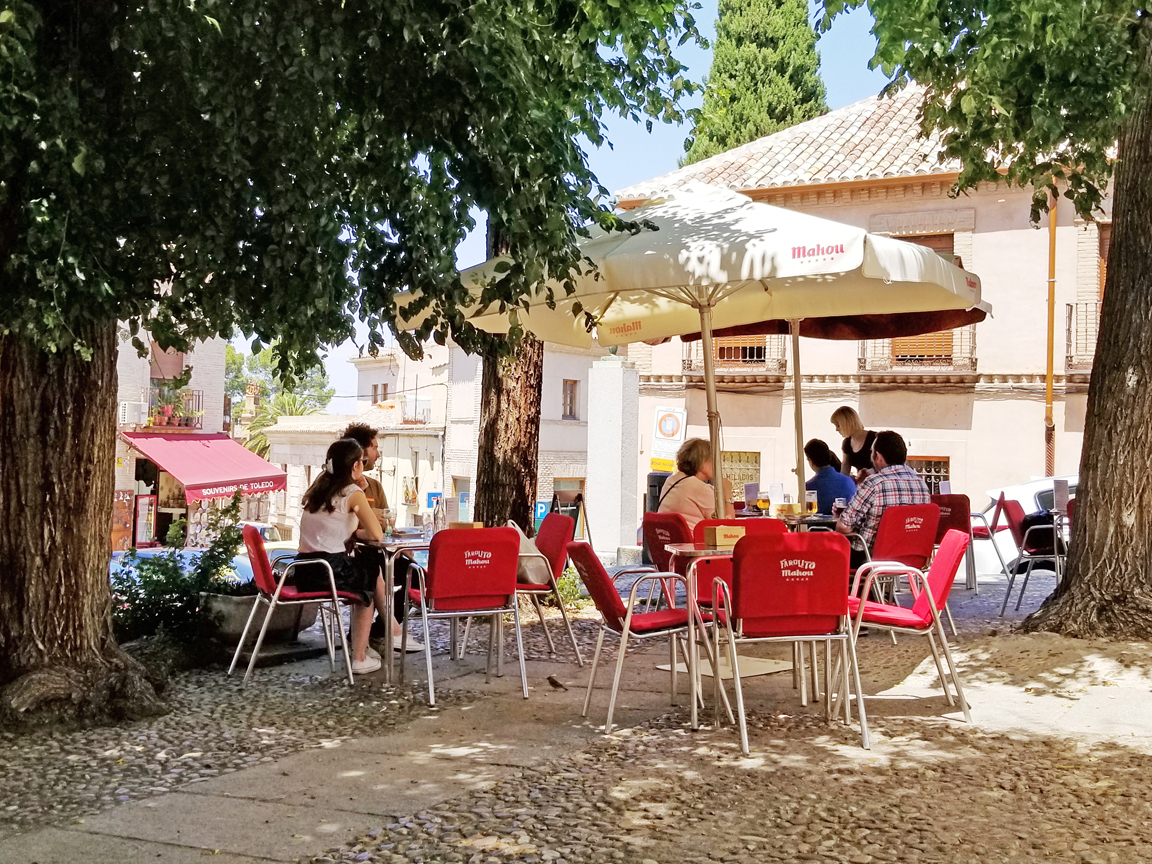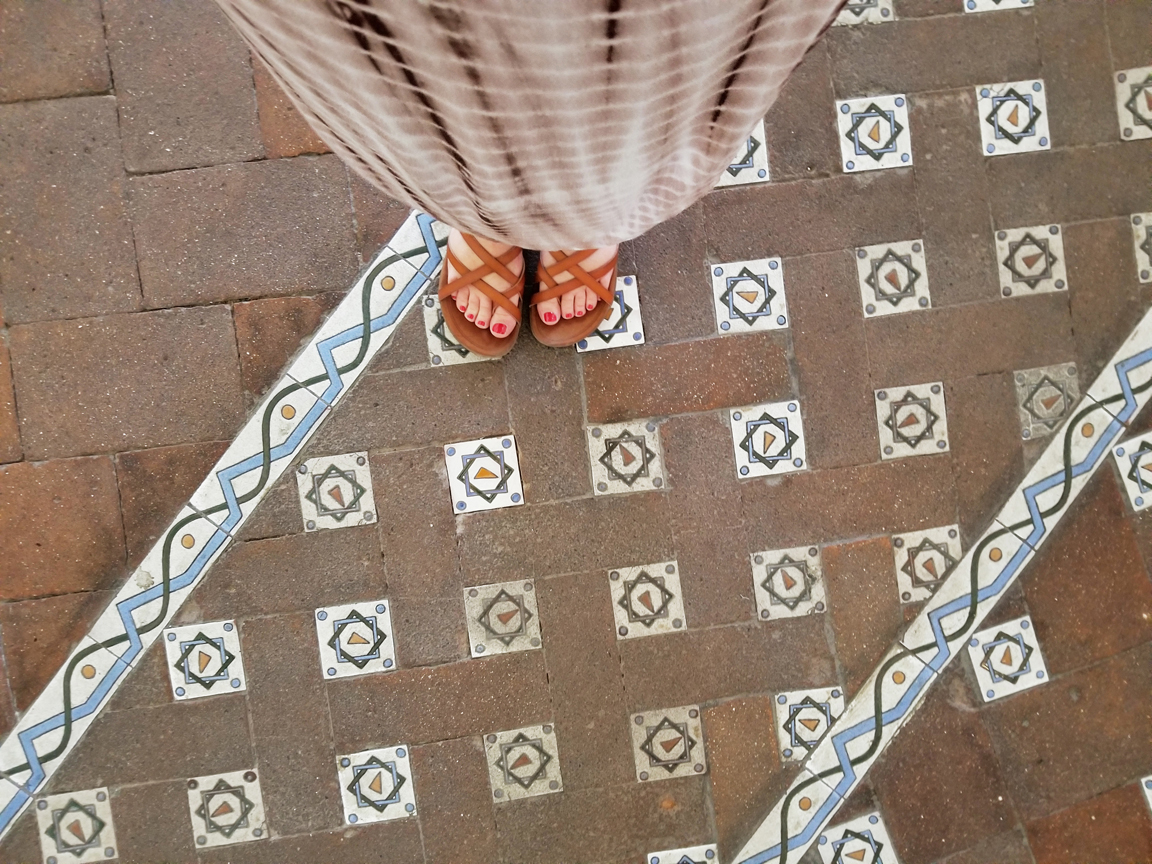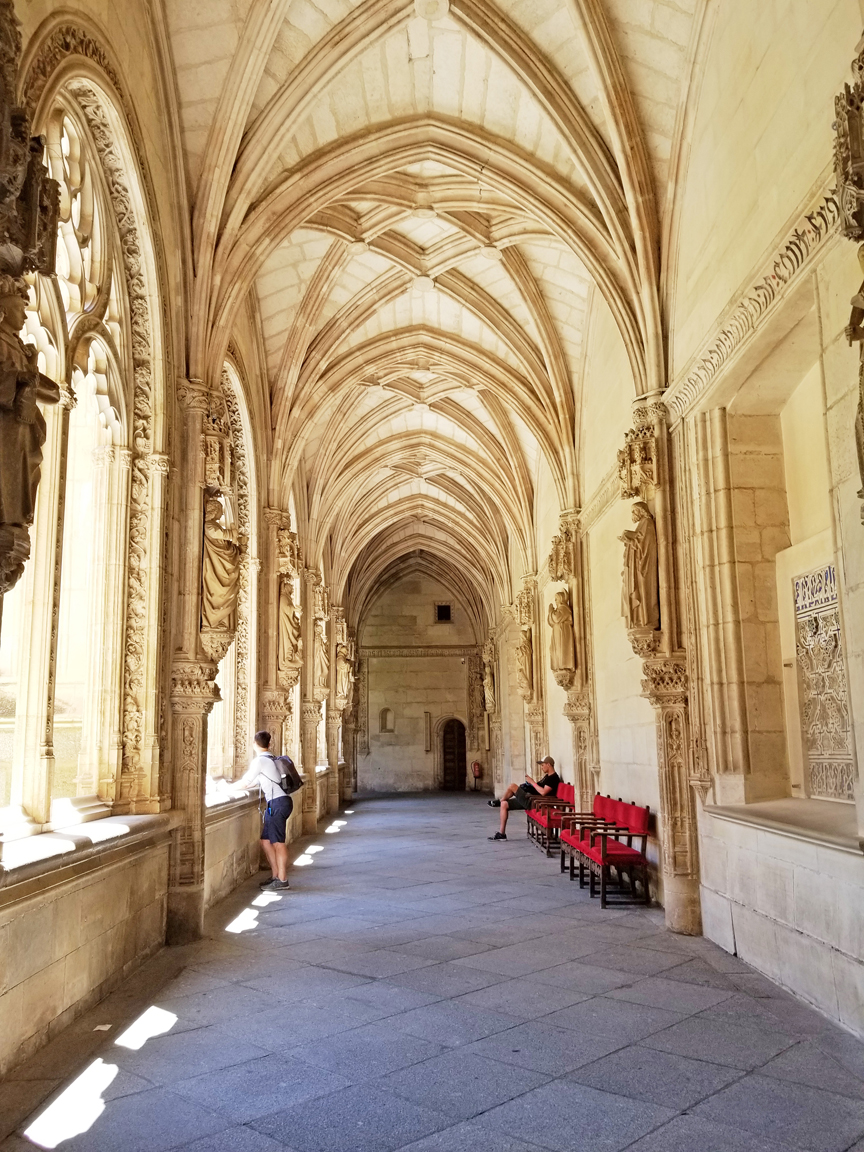Toledo, City of Three Cultures
Toledo is a uniquely Spanish city. Located near the center of the country, it’s also the city best known for retaining characteristics from each of the three religions that defined Spain – Catholicism, Judaism, and Islam. Thanks in part to its status as a UNESCO World Heritage site, rules against new facades in the old, walled city preserve its medieval feel. Because of this sense of history and its proximity to Madrid, Toledo is an extremely popular tourist destination.
Toledo is first mentioned in the Roman era. It became the capital of the Visigoths during the Dark Ages. The city was captured by the Umayyad Caliphate in 711, when Islamic forces crossed the Strait of Gibraltar and established their capital in Córdoba. The Caliphate ushered in an age of enlightenment in which Christians and Jews were given rights and protected as fellow ‘People of the Book’. Instead of destroying Visigothic libraries, the Muslim conquerors translated them.
After visiting the cathedral and Santo Tome to see El Greco’s Burial of Count Orgaz, I headed downhill toward the Jewish quarter. My first stop was the recreation of El Greco’s home (the building he actually lived in was destroyed; this one is a home from the same era). It was my favorite experience of the day – €3 to enjoy the calm, cool gardens and see loads of El Greco’s art.

The house has aspects of each culture, from the Islamic-inspired tile work to the Roman-style courtyard. Located in the Jewish quarter of the city, it retains the arched brick cellars where Jewish families could worship in secret in times of persecution. The Visigothic kings originally followed Ayrianism, but converted to Roman Catholicism in 589, passing laws to punish Jewish citizens at that time. Things got better under the Caliphate, when Jews and Christians were given the same status – slightly below the Muslim ruling class – but deteriorated again after the Reconquista.


Following El Greco’s house, I desperately needed to find something to eat. I reached the Sephardic museum before seeing any food, so kinda rushed through it. The museum is located in the Synagogue of El Tránsito, which was established by Samuel ha-Levi Abulaifa in 1356. Abulaifa was a treasurer of the Spanish king, and was probably granted the right to build the synagogue as compensation for the anti-Jewish pogroms that followed an outbreak of the Black Death in 1348. Because of this royal dispensation, laws requiring synagogues be free of ornamentation and lower than Catholic churches were ignored. Jewish features, such as a balcony for female worshippers and Hebrew inscriptions, are mixed with Islamic touches like beautifully carved geometric patterns and an artesanado ceiling. (See the single picture a few paragraphs down!)

In 1085, the Christians reconquered the city and – surprise of surprises – took the Arabic and Hebrew libraries and worked with scholars from both traditions to translate books into Castilian. At first, Jews were given rights and offered positions in government for having helped take the city back from the Moors. Things took a turn for the worst as Spain became more and more devoutly Catholic – by the 14th century, Jews were again being forced to convert. In 1391 a Dominican priest came to Toledo and incited a massacre in which a large part of the Jewish population of the city were murdered. Finally, during the reign of Ferdinand and Isabella, the Alhambra Decree forced the expulsion of practicing members of the Jewish faith from Spain. Due to this dark history, Spain now allows dual citizenship to anyone who can prove Sephardic heritage.



At this point, I was starving, but I soon stumbled upon food being served in a plaza. It was like a mirage in the desert. I plopped down in a plastic chair and ordered the Menu del Dia for €13. The starter – Salad Niçoise– was great, but the second – chicken and potatoes – was meh. Dessert of fresh fruit and the included glass of wine were nice. I had fun watching a tour group toast, eat, and then disperse as different members went to go grab souvenirs or take a cigarette break. Service was expectedly languid, which I didn’t mind in the midday heat. After lunch, I popped into their restaurant storefront – Dehesa de Majazul – to use los aseos.



After lunch, I visited the Santa María de la Blanca, originally known as Ibn Shushan Synagogue. It was built in 1180 and is possibly the oldest synagogue still standing in Europe. It was built in a Christian kingdom by Muslim architects for Jewish use, making it fairly fascinating. It’s a simple building that feels more like a mosque than a synagogue, with gold and white horseshoe arches, and a slightly atypical layout. In 1480 it was converted to a church, though little changed but the name.




After leaving the synagogue, I continued down the street. Originally I hadn’t planned to visit San Juan de los Reyes monastery, but it was right in front of me and looked pretty. Building began in 1477, commissioned by the Catholic Monarchs – Ferdinand and Isabella. (Side note: It’s so weird that English historians Anglicize the names of foreign monarchs – what’s so hard about saying Isabel and Fernando?) Originally, the monastery was named San Juan de la Reyna in honor of the queen and was meant to be the resting place for the Spanish monarchs. After taking back Granada in 1492, royal plans changed. Building was completed in 1504 and the monastery was inhabited by Franciscan friars.



Buildings created during Isabella and Ferdinand’s reign have their own unique style, appropriately called Isabelline, or Isabelline Gothic. It’s a mixture of late Gothic and early Renaissance elements, with decoration inspired by Castilian, Flemish, and Islamic traditions. Pomegranates and a yoke and bundle of arrows were two symbols often incorporated – the yoke and arrows represented the teamwork of the two monarchs and served as a reminder of their power. El yugo y las flechas also shared the first letter of the monarch’s names – Fernando and Ysabel (the spelling at the time).

The church itself is beautifully decorated but fairly typical of the period in its plan. The cloisters are really what people come to see. Surrounding a lush garden, the lower floor has delicate stone arches and vaulting, with carvings of saints, flora, and fauna. The upper story has a painted artesonado ceiling painted with Fs, Ys, and lions. A marble arch is inscribed with the logo ‘Tanto Monta’, which means “They amount to the same.” The equality of Fernando and Isabel’s partnership and reign is fascinating today, and almost sweet, until you remember that they used that power to start the Spanish Inquisition and expel the Jews from Spain. At the time, the fervent return to Catholicism was considered imperative for reconquering, uniting, and holding the country, but the marriage between church and state set the course of Spanish history, right up through the Civil War in the 20th century.
After visiting the monastery, I started up the street toward Santo Domingo el Antiguo and the Cristo de la Luz mosque. I got to the top of the first hill and couldn’t see how steep the street was beyond the bend. All the streets along the edge of the city were in full sun and the temperature was well into the 90s. I admitted defeat. I walked back down the street to a bus stop, before realizing it wasn’t due for a full hour. I chose to walk up a narrow, shady street toward the cathedral instead. The witchcraft museum was closed and I was too full for the Manchego cheese tasting I’d put in my daily plan. Having reached my limit for the day, I decided to head back to Madrid. And though I planned my trip to be in depth enough to be able to explore different areas of Spain in the future, Toledo is a city I’d love to return to and explore further!

Comments
Post a Comment